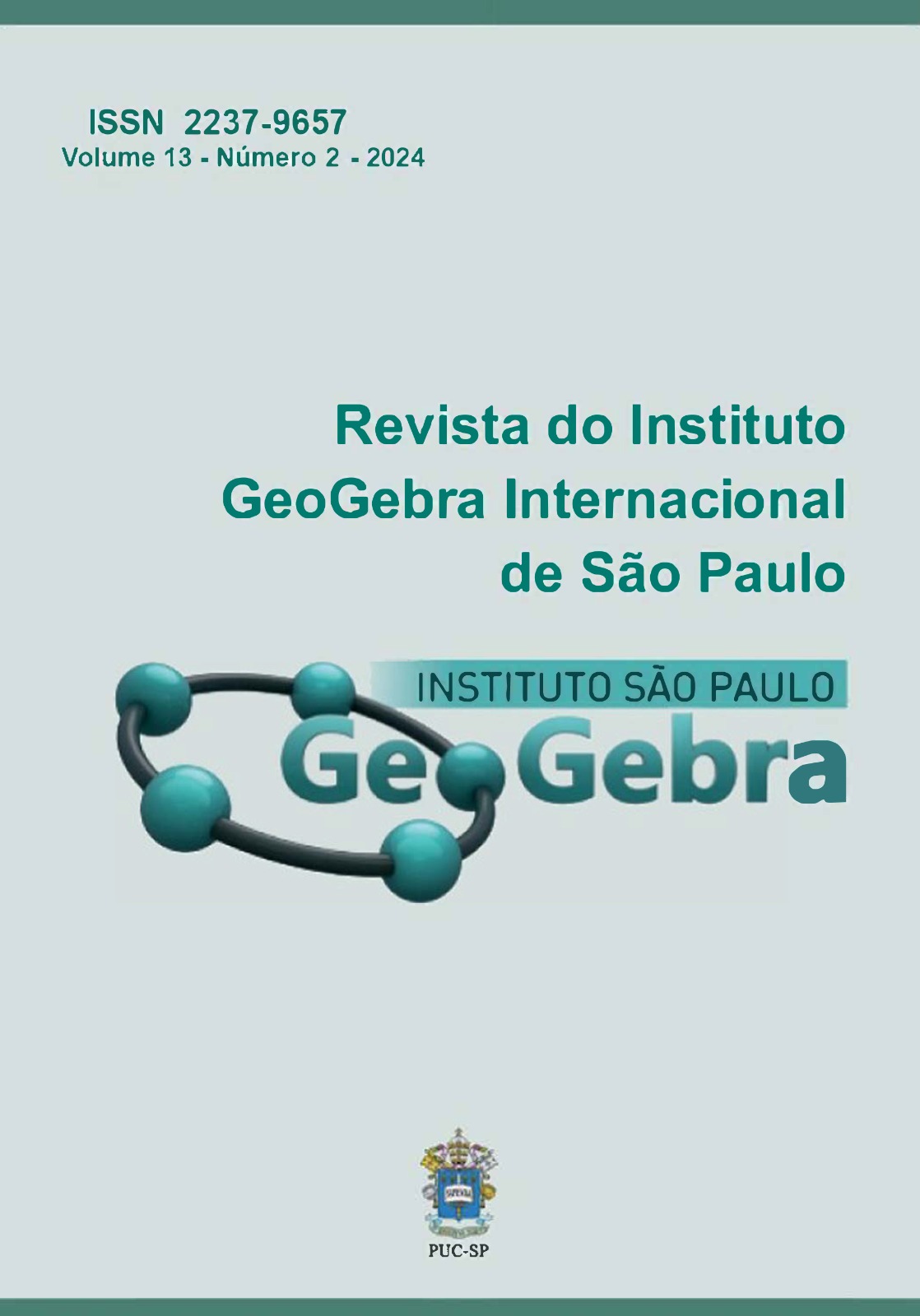Expanding the semiotic scope of GeoGebra by teaching it to speak
DOI:
https://doi.org/10.23925/2237-9657.2024.v13i2p130-138Keywords:
voice synthesis, JavaScript, Geo, inclusive education, semioticsAbstract
In this article, we detail how, through JavaScript programming in GeoGebra, it can be integrated with Google's Text-to-Speech (TTS) service, endowing the software with voice synthesis functionalities. This integration enriches GeoGebra by adding new verbal expression capabilities, significantly broadening its semiotic scope. This enables a representation of the concepts addressed that is both richer and more diverse. Incorporating the vocal dimension transforms the software, introducing an additional level of interactivity and accessibility, which enhances its educational impact. Particularly relevant is the innovation's ability to facilitate the creation of accessible educational activities for people with special needs, making the teaching and learning process more inclusive in digital environments. This advancement represents a significant step towards a more adaptable and comprehensive educational environment, promoting inclusion and expanding the pedagogical possibilities of GeoGebra. Furthermore, we illustrate the practical applicability of this technology through two concrete examples, demonstrating its transformative potential in education.
References
ARIFAH, A. N.; SUGIMAN. The Potential of GeoGebra Exploration in Supporting Multiple Representation Ability. Journal of Physics: Conference Series, [s.l.], v. 1581, n. 012068, 2020. Disponível em: https://iopscience.iop.org/article/10.1088/1742-6596/1581/1/012068/pdf. Acesso em: 9 de fevereiro de 2024.
DOĞAN, Mustafa; İÇEL, Rukiye. O papel do software de geometria dinâmica no processo de aprendizagem: exemplo do GeoGebra sobre triângulos. International Journal of Human Sciences, [s.l.], v. 8, n. 1, 2011. Disponível em: https://www.researchgate.net/publication/267716268_The_role_of_dynamic_geometry_software_in_the_process_of_learning_GeoGebra_example_about_triangles . Acesso em: 9 de fevereiro de 2024.
FLANAGAN, David. JavaScript: The Definitive Guide. 7th ed. Sebastopol, CA: O'Reilly Media, 2020.
HOHENWARTER, M. Multiple representations and GeoGebra-based Learning Environments. Unión. N. 39, p. 11-18, 2014. Disponível em: http://funes.uniandes.edu.co/16146/1/Hohenwarter2014Multiple.pdf. Acesso em: 9 de fevereiro de 2024.
TAN, Xu et al. A Survey on Neural Speech Synthesis. arXiv preprint arXiv:2106.15561, 2021. Disponível em: https://arxiv.org/abs/2106.15561 . Acesso em:10 de fevereiro de 2024.
Downloads
Published
How to Cite
Issue
Section
License
Copyright (c) 2024 Revista do Instituto GeoGebra Internacional de São Paulo

This work is licensed under a Creative Commons Attribution 4.0 International License.
Submission, processing, and publication of articles sent to the journal and registration of the DOI at Crossref is free of charge.
Authors retain their copyright and grant the journal the right of first publication of their article, which is simultaneously licensed under a Creative Commons - Attribution 4.0 International license CC BY that allows others to share the article by acknowledging its authorship and initial publication by the journal.
The GeoGebra journal encourages its authors to register their work with information and communication management systems aimed at researchers, such as Academia.edu, Mendeley, ResearchGate, etc.


 10.23925
10.23925
